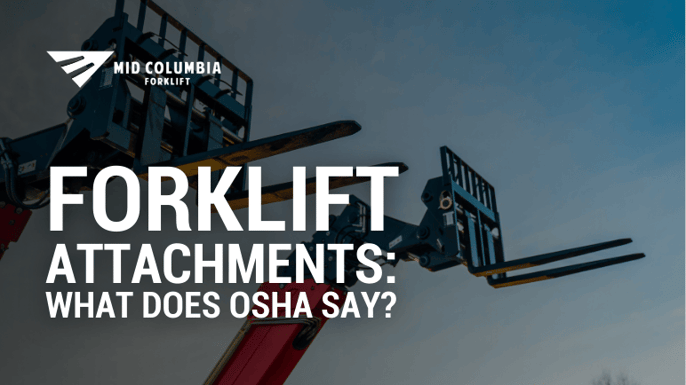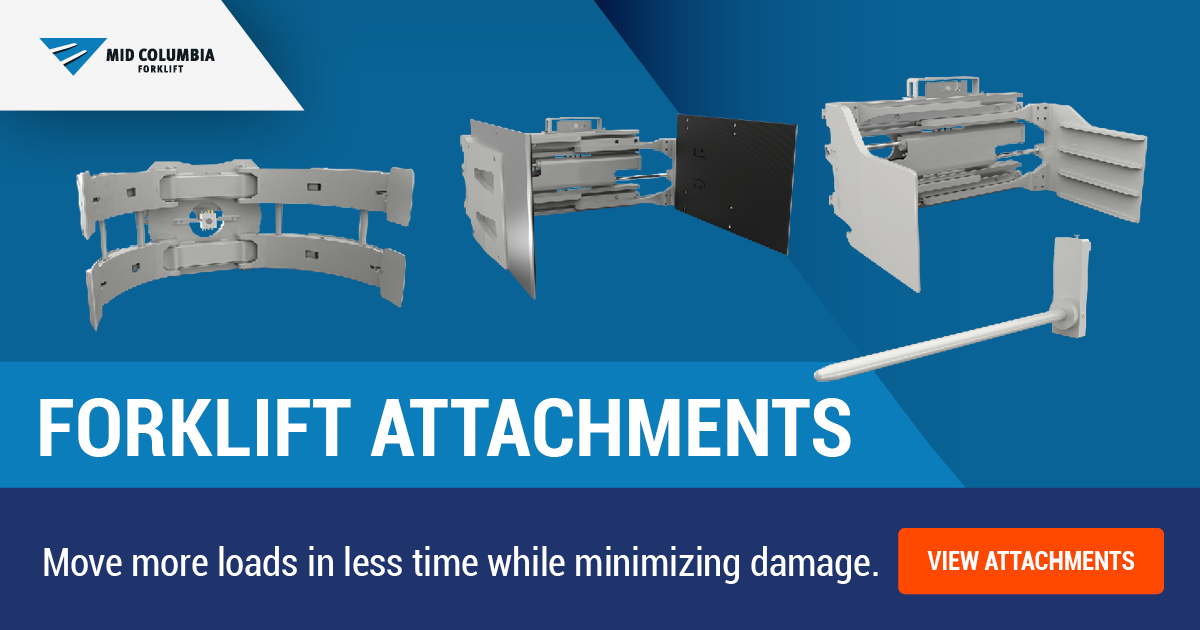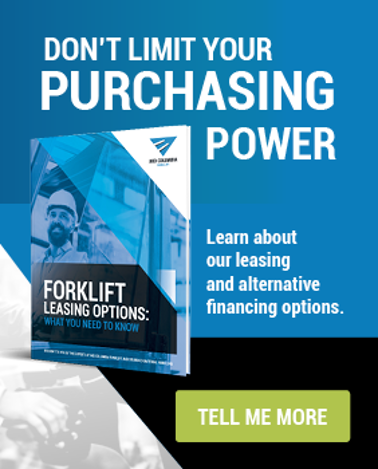Forklift Attachments: What does OSHA say?
by Trey Barber, on January 19, 2024 at 7:54 AM

When you were a kid playing with blocks, did you ever add one last piece only to have the whole thing come tumbling down? We all have. It's how we learn, but it's not an experience you want with your forklifts. Forklift attachments are powerful tools that enhance the versatility of your existing fleet. However, installing them on your fork truck isn't plug-and-play.
OSHA forklift attachment regulations outline the steps required for any modification or addition. Still, they can be tricky to follow if you don't understand the requirement. Read on to learn how attachments alter the capacity of your forklift and how to remain OSHA-compliant during installation.
Attachments and Their Effect on Forklifts
Attachments are a valuable tool for maximizing productivity. As such, they are popular additions to many forklift fleets. However, attachments also affect the fork truck's load capacity and center of balance. This is a serious safety concern if not addressed correctly. To ensure safe use, OSHA issued standard 29 CFR 1910.178(a)(4), which governs the safeguards that must be taken whenever modifying a forklift. Before we dive into the details of OSHA forklift attachment regulations, let's first look at what is considered a forklift attachment and how attachments affect safety.
What Is Considered a Forklift Attachment?
For our purposes, a forklift attachment is any modification that affects the forklift's lifting capacity. Typically, attachments take the place of the standard forks. This variety includes Bale clamps, bin dumpers, or fork extensions. However, side shifters and fork positioners are also considered forklift attachments. Temporary additions, like man baskets, which the forklift uses as part of the lifted load, generally do not qualify as attachments. If you're ever in doubt, contact our team at Mid Columbia Forklift. Our experts are trained to help you understand what is considered a forklift attachment.
How Do Attachments Affect Forklifts?
The truck's power and center of gravity determine how much a forklift can lift. Think of your forklift as a fancy lever with its center of gravity as the fulcrum. It has a fixed counterbalance on one side with the load on the opposite side. The closer the payload is to the center of gravity, the more that counterbalance can lift. However, as you move the payload away from the center of gravity, that same counterbalance can't lift as much.
Attachments add more weight and push the payload away from the forklift’s center of gravity. Because of this, they reduce the forklift’s overall lift capacity. This must be accounted for to operate the forklift safely.
OSHA Forklift Attachment Regulations
As mentioned above, OSHA standard 29 CFR 1910.178(a)(4) governs the requirements for modifying or adding to any powered industrial truck, including forklift attachments. This regulation states, “Modifications and additions which affect the capacity and safe operation shall not be performed by the customer or user without manufacturers prior written approval. Capacity, operation, and maintenance instruction plates, tags, or decals shall be changed accordingly.” Thus, before any attachments can be added to your forklift, three things must occur:
- You must get written permission from the manufacturer authorizing the installation of the attachment.
- You must train your employees on the proper use and operation of the forklift and attachment.
- You must update forklift data plates and similar documentation.
What If The Manufacturer Doesn’t Exist Anymore?
If the manufacturer of your forklift no longer exists, you will follow one of two procedures. First, if the original manufacturer was purchased by another company, you must receive written permission from the purchasing company. For example, suppose Acme Fork Trucks was purchased by Whamadyme Industries. In that case, you'd need to obtain permission from Whamadyme to install an attachment on your Acme forklift.
However, if the original forklift manufacturer went out of business, then OSHA will accept written approval from a Qualified Registered Professional Engineer.
What If The Manufacturer Says No?
If the original manufacturer does not respond to your request or refuses permission, you can enlist the services of a Qualified Registered Professional Engineer. The engineer must do a thorough safety analysis of the vehicle and attachment. Before authorizing the attachment, they must also address any safety or structural issues found or contained in the manufacturer's negative response.
OSHA Forklift Attachment Regulations Made Easy
This may feel like a lot of work to update your forklift, but navigating forklift attachments doesn't have to be a burden. There are two easy methods to ensure your forklift has the attachments you need to stay competitive.
The first is the easiest, though the most specific. If you're in the market for a new forklift and you know you'll need a particular attachment, buy the forklift with the attachment already installed. That way, your dealer does all the heavy lifting—pun intended—to meet OSHA forklift attachment regulations. You’ll only need to train your staff when the fork truck arrives.
The second option is to get the help of your material handling partner. Our team has the experience to make adding an attachment to your existing forklift hassle-free. We can help you get the authorization, data plates, and operator training you need to remain OSHA-compliant. Let us put our four and a half decades of experience to work for you. To learn more about forklift attachments or to invest in a new attachment, contact us online or visit your local Mid Columbia Forklift.
Auburn 253-854-5438
Pasco 509-547-7413
Wenatchee 509-663-9009
Yakima 509-457-5137
Further Reading
How to Read a Forklift Load Capacity Chart
Forklift Modifications and OSHA – What You Need to Know
The Best Forklift Attachments to Improve Productivity





